Neurofeedback’s been getting a great deal of attention among researchers and the public. Many people are becoming aware of neurofeedback as a potential alternative to, or complement of, healing modalities such as talk therapy or psychopharmacology. Unfortunately, neurofeedback can be difficult for the layperson to understand. This post is an attempt to describe neurofeedback in simple terms.
REWARDS AND FEEDBACK
Rewards are important because of their role in motivation. If the end result of a behavior is something you want, you’ll be more motivated to engage in that behavior–all else being equal.
What would rewards be without feedback? Imagine a silly game of basketball in which there are no nets. That could be fun for a small child for whom merely dribbling a ball or running around is exciting enough to provide its own reward. For anyone else, however, basketball without nets would be boring, frustrating, or in some other way unrewarding.
We can think of the basketball net as a source of feedback. The net is there to tell you if the ball went in, and, by extension, if you shot the ball properly. If the ball missed, then you know to correct your body position or to take other actions that increase the chances of making the next free throw. In this example, you’re using feedback (the net) and reward (the good feeling of making a successful attempt) to train yourself (adjusting your body to become better at making free throws).
NEUROFEEDBACK AND BRAINWAVES
Neurofeedback is a way of rewarding your brain for producing certain brainwaves and inhibiting others. Below is a table from Marzbani, Marateb, and Mansourian’s (2016) comprehensive review of neurofeedback that summarizes common brainwaves:

Marzbani et al.’s (2016) Summary of Brainwaves & Characteristics
Adult and adolescent brains produce significant amounts of each of these brainwaves, but certain brainwaves predominate among certain people and also depending on the circumstances. In sleep, you’re mainly in delta and theta; in class or at work, you might be more in upper alpha and SMR. Brainwaves are measured by frequency (in Hertz, or Hz, a measurement of how many brain waves occur in a second) and amplitude (in microvolts, a measurement of how many neurons are firing at once). Frequency is speed; amplitude is power. Together, as in the table above, these measurements tell us about your brain and also allow us to divide and measure your brain activity.
NEUROPLASTICITY
The brain is extraordinarily flexible. The term neuroplasticity refers to the brain’s ability to change in response to experience, which it does constantly. This change, and any particular state of the brain, can be understood through electrical signals within the brain as captured by EEG / qEEG equipment.
Neuroplasticity is good, because it’s what lets our brains respond to experience and keep us living and thriving. Unfortunately, brains can get stuck in certain waves and patterns. Trauma, especially in early childhood, is associated with both elevated delta and elevated beta, meaning a complex combination of over-arousal and shutdown. Sebern Fisher has written informatively of how many diagnoses of apparently distinct mental and behavioral disorders can all be reduced to a single concept of developmental damage based on early childhood trauma, which was studied extensively by Bowlby and Ainsworth, among others. Fisher has described the brain of the traumatized child as being stuck in a state of terror that is variously diagnosed–whether as GAD, depression, ADHD, OCD, or other disorders–but that has one point of origin.
Neurofeedback’s premise is that it is possible to detect and regulate ‘stuck’ brain patterns that are informed by trauma. Detection is carried out through a classification and analysis of your brainwaves. Regulation is achieved by training your brain to return to its originally adaptive nature–that is, by taking advantage of the brain’s neuroplasticity.
Let’s say that, as a result of measurements taken by your neurofeedback practitioner, it seems that your theta activity is much higher than your beta activity. Theta brainwaves are associated with a drifting brain — for example, when you’re in stage 1 sleep, or when you’re daydreaming, theta waves might predominate. Beta waves are associated with faster mental activity — when you’re paying attention to a conversation or reading an engaging book, beta might predominate. Therefore, a high theta to beta ratio could mean that your ‘driftiness’ is overwhelming your attentiveness. Your brain has learned to prefer a certain state; the longer you stay in this state, Fisher argues, the more profoundly the physical structure of your brain, from the neurons up, will shape your behavior, personality, and identity. If you have unresolved or unprocessed trauma, that’s bad news.
Neurofeedback: The Mechanisms
In neurofeedback, your brainwaves are connected to their own reward source. Imagine sitting before a computer screen that has a Pac Man-type game on it. The neurofeedback technician will calibrate this game so that, when your brain does what it’s being asked to do (such as make less theta and more beta), you hear a steady stream of beeps and see the dots being gobbled up faster. The sounds and the game results are your reward; once exposed to them, you want more of them, just like making a free throw (or, for example, working a slot machine, hitting a baseball, or brewing the perfect cup of coffee) makes you want more.
Below is a screen shot of a game from a neurofeedback technology vendor named EEGer. That’s a screen that you, as the neurofeedback client, could see and interact with during a neurofeedback session conducted here at iWellnessUNY.

In neurofeedback, you don’t use your hands to play games; you use your brainwaves. For example, if your neurofeedback provider is trying to reward you for producing more SMR (the brainwave associated with ordinary mental alertness), then the game itself will reward you by increasing the number of birds in the sky, keeping you moving down the road, and emitting beeps.
Neurofeedback, Therapy, and the Window of Tolerance
Therapy works within a window of tolerance that can also be described as a window of arousal. If you enter therapy in an under-aroused state, you won’t be paying attention, focusing, or engaging in ways necessary for your feeling. You might not even feel present in the therapy room. If you’re over-aroused, by contrast, you might be too reactive, anxious, and intolerant. For example, if you can’t bear any reference to your trauma, then your trauma might not be appropriately addressable in therapy.
Neurofeedback is highly relevant to both individual and couples therapy. In couples therapy, addressing underlying problems therapeutically often requires peering into the brain. Imagine a couple in which one partner pursues and the other is disengaged. This situation could be based on imminent circumstances, an established pattern, or a clash between arousal levels in which the partner who pursues is hyper-aroused whereas the partner who disengages is hypo-aroused. Neurofeedback could assist these partners in reaching states of appropriate arousal that are complementary to the therapist’s creation of a safe, structured, and accountable space in which the couple can explore and practice relational dynamics.
Neurofeedback doesn’t do this therapeutic work, although it better prepares clients and their therapists for it. Good neurofeedback practitioners know that the training and learning they facilitate is in the service of a larger model of healing. Helping the brain identify and increase its own ability to reach appropriate arousal is, typically, a beginning to healing, not an end in itself.
WHAT NEUROFEEDBACK WORKS ON
The evidence suggests that, by changing your brainwaves, neurofeedback can address ADHD, PTSD, OCD, depression, addiction, and any number of other mental, behavioral, and physical disorders, even motor disorders. Neurofeedback is well-studied, and its empirical research base is growing every year. However, neurofeedback is also at a disadvantage in comparison to pharmacology. Vast pharmaceutical companies not only sponsor research but also influence both the academic and popular discourse on mental and behavioral health, particularly in support of the premise that the brain should be treated only or primarily chemically. Neurofeedback approaches the brain as an ever-evolving, dynamic, electrical system based on brainwaves.
CONCLUSION
Brain-based therapies are gaining in favor, so the chances are that we’ll be hearing more about neurofeedback. That’s wonderful news as long as we appreciate the role that neurofeedback should play in healing. We hope that this post was helpful in offering you an introduction not only to neurofeedback–which you should certainly explore by learning more about brainwaves and their characteristics–but also to the role of neurofeedback as an adjunct to therapy.


